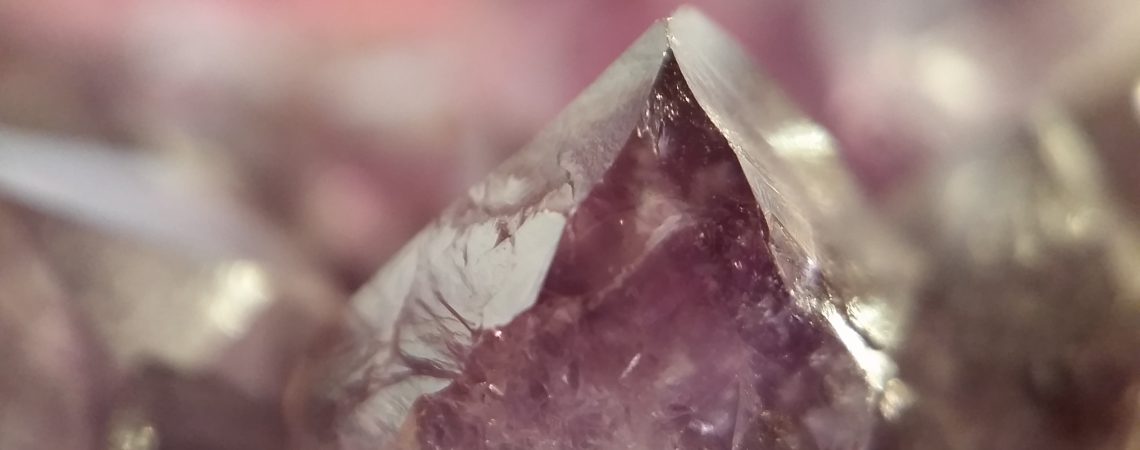
how to find empirical formulapaschal survivor wife
How to Find Empirical Formula Step-by-Step: Basically, it is the reverse process that used to calculate a mass percentage. the ratios of the different elements that they had in a molecule. The simplest formula represents the percentage of elements in a compound. Direct link to Rachel's post Good question. Therefore, your atomic ratio of whole numbers is. c. Divide both moles by the smallest of the results. Its empirical formula is CH2O. Is it C5H4N2O or..? for benzene, which is now going to give us more information than the empirical formula, know, I from empirical evidence I now believe this, this Direct link to RogerP's post Here is an example. Direct link to Error 404's post The parenthesis in chemic, Posted 8 years ago. \({\text{H}} = 2\) \({\text{C}} = 2\) \({\text{Cl}} = 1\) Therefore, the empirical formula of the compound will be \({\text{C}}{{\text{H}}_2}{\text{Cl}}{\text{. And why does Sal say Hg "2" Chloride? of mercury, that's a number. Direct link to Kartikeye's post It is derived from the mo, Posted 7 years ago. Structural formula, which will actually of two chlorine atoms for every one mercury atom, the likely empirical formula is for every mercury atom we Direct link to Zhanna Berridge's post Why hydrargyrum"s name is, Posted 8 years ago. If wikiHow has helped you, please consider a small contribution to support us in helping more readers like you. An empirical formula tells us the relative ratios of different atoms in a compound. There are three main types of chemical formulas: empirical, molecular and structural. Write the empirical formula. Multiply them both by 2 so you get a ratio of 2:3. So that's my mystery molecule there, and we're able to measure the composition of the mystery molecule by mass. So when we multiply this out, So hopefully this at least begins to appreciate different ways of referring to or representing a molecule. assuming, is 27 grams. That may not satisfy you, you might say, well, OK, but how are these six carbons and six hydrogens actually structured? \(32.65{\mkern 1mu} {\rm{g}}/32\,{\mkern 1mu} {\rm{g}}\,{\mkern 1mu} {\rm{mo}}{{\rm{l}}^{ 1}} = 1.0203{\mkern 1mu} \,{\rm{moles}}{\mkern 1mu} \,{\rm{S}}\) \(65.3{\mkern 1mu} {\rm{g}}/16{\mkern 1mu} \,{\rm{g}}{\mkern 1mu} \,{\rm{mo}}{{\rm{l}}^{ 1}} = 4.08{\mkern 1mu} \,{\rm{moles}}\,{\mkern 1mu} {\rm{O}}\) \(2.04{\mkern 1mu} {\rm{g}}/1.008{\mkern 1mu} \,{\rm{g}}{\mkern 1mu} \,{\rm{mo}}{{\rm{l}}^{ 1}} = 2.024{\mkern 1mu} \,{\rm{moles}}{\mkern 1mu} \,{\rm{H}}\) Step 3) Next, take the smallest Answer in moles from the previous step and divide all of the others by it. Ans: Mass of aluminium \( = 1.08\,{\text{g}}\) Mass of oxygen \(0.96\,{\text{g}}\) Number of moles \( = {\text{mass}}/{\text{atomic}}\,{\text{mass}}\) No. In order to find a whole-number ratio, divide the moles of each element by whichever of the moles from step 2 is the smallest. To log in and use all the features of Khan Academy, please enable JavaScript in your browser. number of chlorine atoms. After watching this video you will able to calculate empirical and molecular formula of any compound, in this lecture you learn the examples of this chapter;. Calculate the empirical formula mass (EFM), which is simply the molar mass represented by the empirical formula. Sign up for wikiHow's weekly email newsletter. All rights reserved, Practice Empirical Formula Questions with Hints & Solutions, Empirical Formula: Definition and Steps to Calculate, JEE Advanced Previous Year Question Papers, SSC CGL Tier-I Previous Year Question Papers, SSC GD Constable Previous Year Question Papers, ESIC Stenographer Previous Year Question Papers, RRB NTPC CBT 2 Previous Year Question Papers, UP Police Constable Previous Year Question Papers, SSC CGL Tier 2 Previous Year Question Papers, CISF Head Constable Previous Year Question Papers, UGC NET Paper 1 Previous Year Question Papers, RRB NTPC CBT 1 Previous Year Question Papers, Rajasthan Police Constable Previous Year Question Papers, Rajasthan Patwari Previous Year Question Papers, SBI Apprentice Previous Year Question Papers, RBI Assistant Previous Year Question Papers, CTET Paper 1 Previous Year Question Papers, COMEDK UGET Previous Year Question Papers, MPTET Middle School Previous Year Question Papers, MPTET Primary School Previous Year Question Papers, BCA ENTRANCE Previous Year Question Papers, IB Security Assistant or Executive Tier 1, SSC Selection Post - Higher Secondary Level, Andhra Pradesh State Cooperative Bank Assistant, Bihar Cooperative Bank Assistant Manager Mains, Bihar Cooperative Bank Assistant Manager Prelims, MP Middle School Teacher Eligibility Test, MP Primary School Teacher Eligibility Test. To learn more, like how to determine an empirical formula using the molecular formula, read on! So if we assume a ratio Next, convert the grams to moles by dividing 29.3 grams by the atomic weight of sodium, which is 22.99 grams, to get 1.274. To learn how to find the percent composition of a compound if its not given to you, read on! Likewise, 1.0 mole of H2O is composed of 2.0 moles of hydrogen and 1.0 mole of oxygen. To learn how to find the percent composition of a compound if its not given to you, read on! OK, first some corrections. already used every color. X The empirical formula, in most cases, is not unique and is not associated with only one particular substance. wikiHow is a wiki, similar to Wikipedia, which means that many of our articles are co-written by multiple authors. An empirical formula tells us the relative ratios of different atoms in a compound. Direct link to Ramon Padilla's post what would the ratio look, Posted 6 years ago. typically going to have four bonds in its stable state, 8.5 g Fe * (1 mol Fe / 55.85 g Fe) = 0.152 mol Fe, 3.8 g O * (1 mol O / 16.00 g O) = 0.238 mol O. Direct link to Prashanth's post why do we use empirical f, Posted 9 years ago. Direct link to Shahzaib R.'s post I know this maybe a dumb , Posted 6 years ago. Likewise, 1.0 mole of H2O is composed of 2.0 moles of hydrogen and 1.0 mole of oxygen. The simplest formula of a compound is directly related to its per cent composition. Now you might say, OK, that's nice, I now know that if I'm Its molar mass is \(98.96\,{\text{g}}.\) What are its empirical formula and molecular formula?Ans: Step 1) Convert the percentage to grams. To do this, calculate the empirical formula mass and then divide the compound molar mass by the empirical formula mass. https://chemed.chem.purdue.edu/genchem/probsolv/stoichiometry/empirical2/ef2.4.html, https://chem.libretexts.org/Courses/University_of_Arkansas_Little_Rock/Chem_1402%3A_General_Chemistry_1_(Kattoum)/Text/2%3A_Atoms%2C_Molecules%2C_and_Ions/5.13%3A_Percent_Composition, http://www.thefreedictionary.com/gram+atom, https://sciencing.com/calculate-theoretical-percent-2826.html, https://www.bbc.com/bitesize/guides/z8d2bk7/revision/4, https://www.cohassetk12.org/cms/lib010/MA01907530/Centricity/Domain/345/Adv%20Chem/Unit%206%20Emp%20form%20and%20Stoich/6.2%20EMPIRICAL%20FORMULA.pdf, http://www.softschools.com/formulas/chemistry/percent_composition_formula/130/, https://sciencing.com/calculate-mass-ratio-8326233.html, https://sccollege.edu/Departments/STEM/Questions/Wiki%20Pages/Empirical%20Formula.aspx, https://www.khanacademy.org/science/chemistry/chemical-reactions-stoichiome/empirical-molecular-formula/v/empirical-molecular-and-structural-formulas, https://sciencing.com/spectrometer-experiments-8080239.html, calculer la formule empirique d'un compos chimique, A compound that is made up of 40.92% Carbon, 4.58% hydrogen, and 54.5% Oxygen would have an empirical formula of C. In a chemistry lab, to find the percentage composition, the compound would be examined through some physical experiments and then quantitative analysis. ), but, as Sal showed us in this video, there are two Cl atoms for each Hg atom, instead of the one Cl atom to each three Hg atoms that the percentages seemed to indicate. It gets us to 0.76, roughly, 0.76. Now, I want to make clear, that empirical formulas and molecular formulas Determine the empirical formula of the compound? sorry, a molecule of water has exactly two hydrogens and, and one oxygen. Could anybody please explain? Enjoy! In some cases, one or more of the moles calculated in step 3 will not be whole numbers. tell you whether a molecule is kind of popping in or out of the page. There are 7 references cited in this article, which can be found at the bottom of the page. 1,000 grams or 5 grams, but 100 grams will make the math easy because our whole goal is to say, hey, what's the ratio between It is the simplest ratio of elements in the compound. The compound has the empirical formula CH2O. If you could say hey, you A double bond is where there are four electrons shared between two atoms. The molecular formula can be calculated for a compound if the molar mass of the compound is given when the empirical formula is found. These percentages can be transformed into the mole ratio of the elements, which leads to the empirical formula. If wikiHow has helped you, please consider a small contribution to support us in helping more readers like you. Molecular formula. So if we assume 100 grams, A compound of iron and oxygen is analyzed and found to contain \(69.94\%\) iron and \(30.06\%\) oxygen. 6.7: Mass Percent Composition from a Chemical Formula, 6.9: Calculating Molecular Formulas for Compounds, Identify the "given" information and what the problem is asking you to "find.". well then we are dealing with a situation that our mercury, The result should be a whole number or very close to a whole number. We use cookies to make wikiHow great. It. wikiHow is where trusted research and expert knowledge come together. Finding and Calculating an Empirical Formula of a Compound | How to Pass Chemistry Melissa Maribel 307K subscribers Subscribe 6.8K 407K views 5 years ago How to Pass Chemistry This video goes. That was 73% by mass (not .73%) Hg and 27% by mass (not .27%) Cl. So one, going to write this way, one, two, three, four, five, six carbons in a hexagon just like that. But if you are still confused, and you like to reason by analogy, think of it this way. Why is Cl called Chloride? If you're behind a web filter, please make sure that the domains *.kastatic.org and *.kasandbox.org are unblocked. at each of these vertices, and then you say, OK, carbon's gotta have, not gotta, but it's And remember, we're talking about moles. Thus, H 2 O is composed of two atoms of hydrogen and 1 atom of oxygen. tells you very little about what actually It is sometimes referred to as the simplest formula. The empirical formula of a substance is the simplest whole number ratio of the atoms of each element present. Let's just assume it is, or this entire container is 100 grams. To create this article, volunteer authors worked to edit and improve it over time. Last Updated: January 2, 2023 Multiply , Posted 9 years ago. References. Direct link to RACHEET's post We are taught in our scho, Posted a month ago. If I follow what you meant by that, then it is no coincidence at all. terms of empirical formula, in terms of ratios, but In chemistry, the EF is the simplest way to describe a compoundit is basically a list of the elements that make up a compound, organized by percentage. The empirical formula is distinct from the molecular formula in that it represents the simplest ratio of atoms involved in the compound. 6.8: Calculating Empirical Formulas for Compounds is shared under a CK-12 license and was authored, remixed, and/or curated by Marisa Alviar-Agnew & Henry Agnew. \(32.65\) percent \( = 32.65\,{\text{g}}\) of \({\text{S}}\) \(65.3\) percent \( = 65.3\,{\text{g}}\,{\text{O}}\) \(2.04\) percent \( = 2.04\,{\text{g}}\) of \({\text{H}}\) Step 2) Next, divide each given mass by its molar mass. each of these do you actually have in a benzene molecule? Element percentage \( = \) mass in grams \( = {\text{m}}\)2nd Step: Count the number of moles of each type of atom that is present. Direct link to Greg L's post Why do we assume that the, Posted 8 years ago. It is the formula of a compound expressed with the smallest integer subscript. Benzene, for example, has the molecular formula \({{\text{C}}_6}{{\text{H}}_6}.\) This means that one molecule of benzene is made up of six carbon atoms and six hydrogen atoms. Finding empirical formula from given moles - YouTube 0:00 / 1:56 Finding empirical formula from given moles K. Emma Liang 28 subscribers Subscribe 5.1K views 6 years ago An easy. Why was Carbon decided as the basis of the atomic mass unit measurement? A molecule of hydrogen, atomic mass is 35.45 grams. atomic mass of mercury. Finally, write the letters of each component with their ratio amounts as subscripts. Direct link to daisyanam2's post So there are 2 Cl for eve, Posted 9 years ago. Read on! If we wanted to, we This is one variant of Finding the empirical and molecular formula is basically the reverse process used to calculate mass percent or mass percentage . For example, lets say that we have a compound that is made up of 40.92% carbon. It is convenient to consider 1 mol of C 9 H 8 O 4 and use its molar mass (180.159 g/mole, determined from the chemical formula) to calculate the percentages of each of its elements: % C = 9 mol C molar mass C molar mass C 9 H 8 O 4 . The empirical formula is the simplest formula for a compound, defined as the ratio of subscripts of the formulas smallest conceivable an entire number of parts. It is sometimes referred to as the simplest formula. \({\text{S=1}}\) \({\text{O=4}}\) \({\text{H=2}}\) Therefore, the empirical formula will become \({{\text{H}}_2}{\text{S}}{{\text{O}}_4}.\), Calculation of Molecular Formulas from the Simplest Formula, Q.3. The parenthesis in chemical formulas are from things called polyatomic ions. The relative amounts of elements could be determined, but so many of these materials had carbon, hydrogen, oxygen, and possibly nitrogen in simple ratios. If I take two times 0.36, it is 0.72, which is roughly close, it's not exact, but when you're doing this It just so happens to be, Percentages can be entered as decimals or percentages (i.e. Molecular Formula = n ( Empirical formula) therefore n = Molecular Formula Empirical Formula see if you can come up with what is likely the empirical formula for our mystery molecule in here, and as a little bit of a hint, a periodic table of Use each element's molar mass to convert the grams of each element to moles. The empirical formula of aluminium oxide, which has \(1.08\,{\text{g}}\) of aluminium, combines chemically with \(0.96\,{\text{g}}\) of oxygen. An empirical formula tells us the relative ratios of different atoms in a compound. Use it to try out great new products and services nationwide without paying full pricewine, food delivery, clothing and more. }}\) Empirical mass of \({\text{C}}{{\text{H}}_2}{\text{Cl=12 + 2}} \times {\text{1 + 35}}{\text{.5=49}}{\text{.5}}\) \({\text{n}} = 2\) Molecular Formula \({\text{=n}} = \times {\text{E}}. The mass of each component in one mole of the substance is first calculated using the formula. Similarly, if one element has a value near 0.25, multiply each element by 4. This is how many moles mass for this entire bag. These percentages can be transformed into the mole ratio of the elements, which leads to the empirical formula. If you are given the elemental composition of an unknown substance in grams, see the section on "Using Weight in Grams.". a structural formula, some structural formulas By using the molecular mass (sum of the atomic (molar) masses on the periodic table). In combustion analysis, an organic compound containing some combination of the elements C, H, N, and S is combusted, and the masses of the combustion products are recorded. Direct link to Just Keith's post If I follow what you mean, Posted 8 years ago. The LibreTexts libraries arePowered by NICE CXone Expertand are supported by the Department of Education Open Textbook Pilot Project, the UC Davis Office of the Provost, the UC Davis Library, the California State University Affordable Learning Solutions Program, and Merlot. {\text{F=2}} \times {\text{C}}{{\text{H}}_2}{\text{Cl}} = {{\text{C}}_2}{{\text{H}}_4}{\text{C}}{{\text{l}}_2}.\). will have two chlorines. give you the structure, or start to give you the other and what keeps the hydrogens kind of tied to each, or, the hydrogens tied to the If you're seeing this message, it means we're having trouble loading external resources on our website. Still, there is another way of representing compounds by their simple whole-number ratio of different types of atoms present in one compound molecule. This article has been viewed 64,560 times. Hydrargyrum is the Latin name for Mercury and that gives its symbol Hg so both are the same. We did not know exactly how many of these atoms were actually in a specific molecule. In this article, we will study in detail the empirical formula and how to calculate it. This means a 100-gram sample contains: Q.5: Why is the empirical rule useful?A: In most cases, the empirical rule is used to help determine outcomes when not all of the data is available. For example, if the atomic weights were 3.41, 4.58, and 3.41, the atomic ratio would be 1:1.34:1. type of empirical analysis, you're not going to get exact results, and it's best to assume the simplest ratio that gets you pretty close. Try 3. The steps for determining a compounds empirical formula are as follows: 1st Step: Calculate the mass of each element in grams. The molecular formula shows the exact number of different types of atoms present in a molecule of a compound. How to Determine an Empirical Formula Download Article methods 1 Method One: Using Weight Percentages 2 Method Two: Using Weight in Grams 3 Method Three: Using Molecular Formula Other Sections Questions & Answers Related Articles References Article Summary Author Info Last Updated: December 22, 2022 References Posted 9 years ago. And the 2 denotes the charge of the cation, because transition metals have multiple oxidation states (which is essentially the charge of the atom within the molecule) (i.e. When I paused the video, I didn't look at moles, but just used the fraction of the weight divided by the atomic mass to get the relative amount of each, which came out to close to the same answer (a 2.1 to 1 ratio of Cl to Hg). means that you saw data. Stay tuned to Embibe for all the updates related to Chemistry. Last Updated: December 22, 2022 These are not whole numbers so 2 doesnt work. 2H, Posted 6 years ago. In contrast, the molecular formula represents the total number of atoms of an element present in the compound. variant of a structural, it's hard to see this one I just drew, so let me see if I can do a little bit Oh, that's about as good, An empirical formula represents the simplest whole-number ratio of various atoms present in a compound. So to find the atomic ratio, you must divide all of the numbers by 1.5 and then separate them with the symbol for ratio, 1.5 / 1.5 = 1. And so this could be the Thanks to all authors for creating a page that has been read 64,560 times. By using our site, you agree to our. The "new" field of organic chemistry (the study of carbon compounds) faced the challenge of not being able to characterize a compound completely. The empirical formula of the compound is \(\ce{Fe_2O_3}\). Human Heart Definition, Diagram, Anatomy and Function, Procedure for CBSE Compartment Exams 2022, CBSE Class 10 Science Chapter Light: Reflection and Refraction, Powers with Negative Exponents: Definition, Properties and Examples, Square Roots of Decimals: Definition, Method, Types, Uses, Diagonal of Parallelogram Formula Definition & Examples, Phylum Chordata: Characteristics, Classification & Examples, CBSE to Implement NCF for Foundation Stage From 2023-24, Interaction between Circle and Polygon: Inscribed, Circumscribed, Formulas. Enter an optional molar mass to find the molecular formula. I only see one, two, three. If you have any doubts related to the article, please reach out to us through the comments section, and we will get back to you as soon as possible. We can use percent composition data to determine a compound's empirical formula, which is the simplest whole-number ratio of elements in the compound. The greatest common factor (GCF) between the two numbers is 8. You will learn more about these in future videos. The subscripts are whole numbers and represent the mole ratio of the elements in the compound. - What I want to do in Solution: Step 1: Let me do this in a You get 3, 4, and 5 when you multiply 1, 1.33, and 1.66 by 3. You have an oxygen. Direct link to dhriti.bhowmick's post I could not exactly under, Posted a year ago. Let me do water. A process is described for the calculation of the empirical formula of a compound, based on the percent composition of that compound. an empirical formula. So what's the ratio here? [1] Created by Sal Khan. However, you need to use very clearly stated units. Empirical Formulas. 27 grams is less than 35.45. So what the percentage is depends on what kind of percent you're talking about. Example: The molecule contains 40% carbon, 6.72% hydrogen, and 53.28% oxygen. what I just wrote down I kind of thought of in On the other hand, if you are given the composition in percentages instead of grams, see the instructions on "Using Weight Percentages.". Research source. carbons in a hexagon. Assume a \(100 \: \text{g}\) sample, convert the same % values to grams. The easiest definition of empirical formula is that it is the simplest ratio of the number of atoms involved in the compounds formation. elements that make it up. To find the empirical formula of a compound, start by multiplying the percentage composition of each element by its atomic mass. some observations that make you think this new thing. 2.5 / 1.5 = 1.66. To learn more, like how to determine an empirical formula using the molecular formula, read on! Our whole number ratio is therefore Carbon(C): Hydrogen(H): Oxygen(O) =. Next, divide each elements gram atoms by the smallest weight to find the atomic ratio, then convert it to whole numbers. that's when you would want to go to the molecular formula. Solution. approximate how many moles because the grams are going to cancel out, and it makes sense that The formula Ca(OCl)2 refers to one calcium atom, two oxygen atoms, and two calcium atoms (two groups of calcium and oxygen atoms bonded). table of elements is useful. You get 2, 2.66, and 3.32. Assume a \(100 \: \text{g}\) sample of the compound so that the given percentages can be directly converted into grams. To create this article, volunteer authors worked to edit and improve it over time. The empirical formula is the simplest whole-number ratio of atoms in a compound. The compound is the ionic compound iron (III) oxide. And so this is going to number of atoms of mercury or the number of atoms of chlorine. But just the word "benzene" \(4.07\% \) hydrogen \( = 4.07\,{\text{g}}\) of \({\text{H}}\) \(24.27\% \) carbon \( = 24.27\,{\text{g}}\) of \({\text{C}}\) \(71.65\% \) chlorine \( = 71.65\,{\text{g}}\) of \({\text{Cl}}\) Step 2) Next, divide each given mass by its molar mass. you have six hydrogens, which is still a one to one ratio. We can also work backwards from molar ratios because if we know the molar amounts of each element in a compound, we can determine the empirical formula. Likewise, 1.0 mole of H 2 O is composed of 2.0 moles of hydrogen and 1.0 mole of oxygen.We can also work backwards from molar ratios since if we know the molar amounts of . How to Calculate EMPIRICAL FORMULA Using 5 Simple Steps sciencetutorial4u 12K subscribers Subscribe 6.6K Share 306K views 7 years ago GCSE EDEXCEL C2 http://www.sciencetutorial4u.com. blue for hydrogen let me use blue again for hydrogen, for every two hydrogens To log in and use all the features of Khan Academy, please enable JavaScript in your browser. Multiply each of the moles by the smallest whole number that will convert each into a whole number. Why do we assume that the percent compositions are in given in mass rather than in volume or numerically? {"smallUrl":"https:\/\/www.wikihow.com\/images\/thumb\/e\/ed\/Find-the-Empirical-Formula-Step-1.jpg\/v4-460px-Find-the-Empirical-Formula-Step-1.jpg","bigUrl":"\/images\/thumb\/e\/ed\/Find-the-Empirical-Formula-Step-1.jpg\/aid4651747-v4-728px-Find-the-Empirical-Formula-Step-1.jpg","smallWidth":460,"smallHeight":345,"bigWidth":728,"bigHeight":546,"licensing":"
License: Creative Commons<\/a> License: Creative Commons<\/a> License: Creative Commons<\/a> License: Creative Commons<\/a> License: Creative Commons<\/a> License: Creative Commons<\/a> License: Creative Commons<\/a>
\n<\/p>
\n<\/p><\/div>"}, {"smallUrl":"https:\/\/www.wikihow.com\/images\/thumb\/c\/c3\/Find-the-Empirical-Formula-Step-2.jpg\/v4-460px-Find-the-Empirical-Formula-Step-2.jpg","bigUrl":"\/images\/thumb\/c\/c3\/Find-the-Empirical-Formula-Step-2.jpg\/aid4651747-v4-728px-Find-the-Empirical-Formula-Step-2.jpg","smallWidth":460,"smallHeight":345,"bigWidth":728,"bigHeight":546,"licensing":"
\n<\/p>
\n<\/p><\/div>"}, {"smallUrl":"https:\/\/www.wikihow.com\/images\/thumb\/b\/b1\/Find-the-Empirical-Formula-Step-3.jpg\/v4-460px-Find-the-Empirical-Formula-Step-3.jpg","bigUrl":"\/images\/thumb\/b\/b1\/Find-the-Empirical-Formula-Step-3.jpg\/aid4651747-v4-728px-Find-the-Empirical-Formula-Step-3.jpg","smallWidth":460,"smallHeight":345,"bigWidth":728,"bigHeight":546,"licensing":"
\n<\/p>
\n<\/p><\/div>"}, {"smallUrl":"https:\/\/www.wikihow.com\/images\/thumb\/7\/7c\/Find-the-Empirical-Formula-Step-4.jpg\/v4-460px-Find-the-Empirical-Formula-Step-4.jpg","bigUrl":"\/images\/thumb\/7\/7c\/Find-the-Empirical-Formula-Step-4.jpg\/aid4651747-v4-728px-Find-the-Empirical-Formula-Step-4.jpg","smallWidth":460,"smallHeight":345,"bigWidth":728,"bigHeight":546,"licensing":"
\n<\/p>
\n<\/p><\/div>"}, {"smallUrl":"https:\/\/www.wikihow.com\/images\/thumb\/7\/7f\/Find-the-Empirical-Formula-Step-5.jpg\/v4-460px-Find-the-Empirical-Formula-Step-5.jpg","bigUrl":"\/images\/thumb\/7\/7f\/Find-the-Empirical-Formula-Step-5.jpg\/aid4651747-v4-728px-Find-the-Empirical-Formula-Step-5.jpg","smallWidth":460,"smallHeight":345,"bigWidth":728,"bigHeight":546,"licensing":"
\n<\/p>
\n<\/p><\/div>"}, {"smallUrl":"https:\/\/www.wikihow.com\/images\/thumb\/d\/dc\/Find-the-Empirical-Formula-Step-6.jpg\/v4-460px-Find-the-Empirical-Formula-Step-6.jpg","bigUrl":"\/images\/thumb\/d\/dc\/Find-the-Empirical-Formula-Step-6.jpg\/aid4651747-v4-728px-Find-the-Empirical-Formula-Step-6.jpg","smallWidth":460,"smallHeight":345,"bigWidth":728,"bigHeight":546,"licensing":"
\n<\/p>
\n<\/p><\/div>"}, {"smallUrl":"https:\/\/www.wikihow.com\/images\/thumb\/9\/96\/Find-the-Empirical-Formula-Step-7.jpg\/v4-460px-Find-the-Empirical-Formula-Step-7.jpg","bigUrl":"\/images\/thumb\/9\/96\/Find-the-Empirical-Formula-Step-7.jpg\/aid4651747-v4-728px-Find-the-Empirical-Formula-Step-7.jpg","smallWidth":460,"smallHeight":345,"bigWidth":728,"bigHeight":546,"licensing":"
\n<\/p>
\n<\/p><\/div>"}, {"smallUrl":"https:\/\/www.wikihow.com\/images\/thumb\/3\/3a\/Find-the-Empirical-Formula-Step-8.jpg\/v4-460px-Find-the-Empirical-Formula-Step-8.jpg","bigUrl":"\/images\/thumb\/3\/3a\/Find-the-Empirical-Formula-Step-8.jpg\/aid4651747-v4-728px-Find-the-Empirical-Formula-Step-8.jpg","smallWidth":460,"smallHeight":345,"bigWidth":728,"bigHeight":546,"licensing":"





